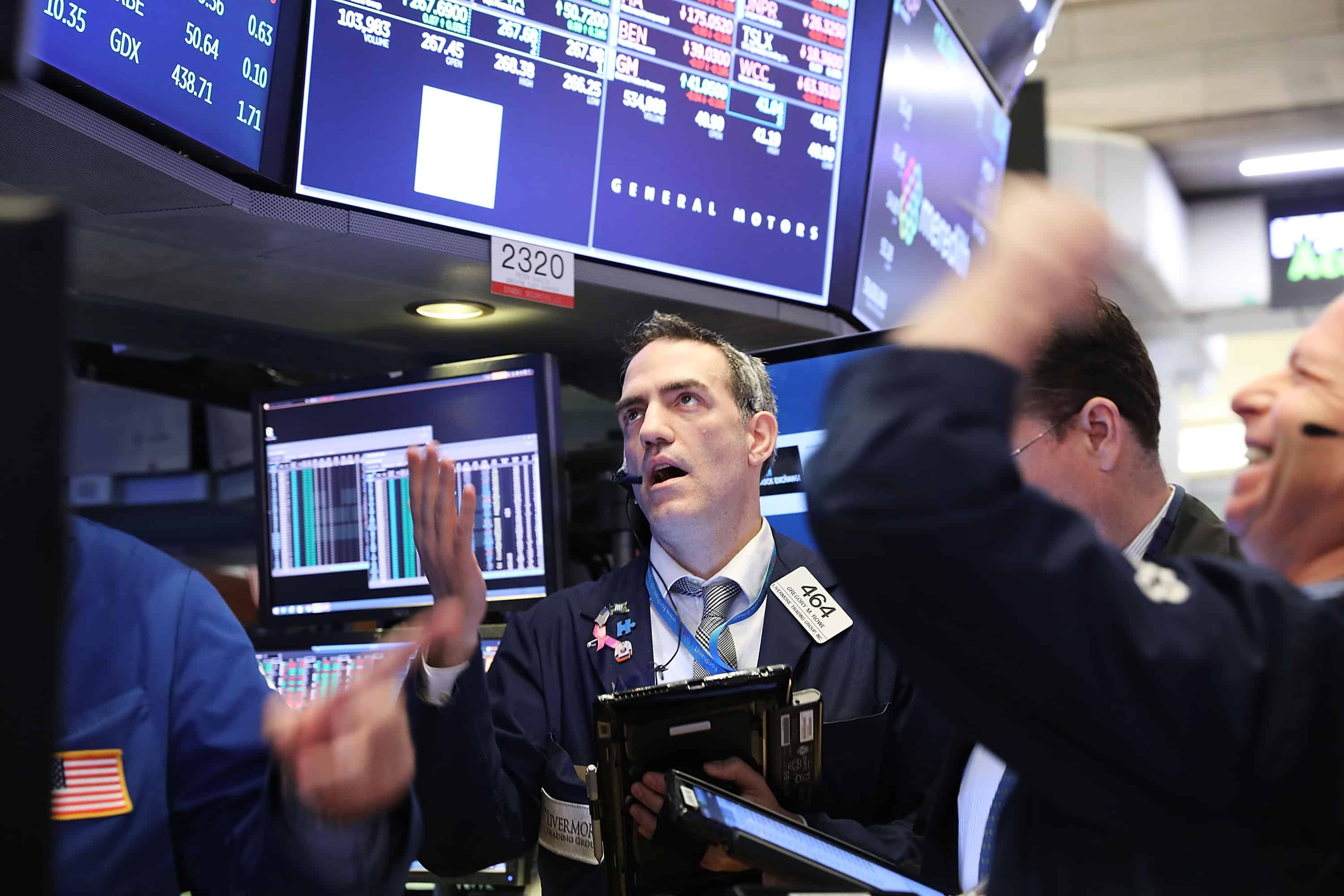
After rebounding for several days following an early-February plunge, the Dow Jones industrial average fell nearly 300 points on Tuesday.
The reason: Federal Reserve chairman Jerome Powell told Congress that “inflation is moving up to target” and that the Fed will keep raising rates this year — despite the recent market volatility — to keep inflation in check.
For a stock market that looked like it was finally regaining its footing, Powell’s testimony reminded investors just why the Dow plummeted more than 3,000 points in the first place: growing fear that inflation is finally on the rise, which left some investors to wonder if they could still make money investing in the stock market.
At first blush, this seems like an odd concern, since rising inflation and rates are both natural outcomes of an improving economy. In fact, in the years following the global financial crisis, investors have been hoping the economy would grow fast enough at some point to generate even a little inflation.
The fact that the economy is now posting the strongest growth rates and wage increases since last decade’s economic collapse shows that the U.S. economy is finally firing on all cylinders.
But it turns out that too much of a good thing is bad for the stock market.
How inflation, the economy, and markets affect one another
The economy, markets, and inflation are tied together with hidden strings. The more that these three forces stay in balance, with light pulls on each string, the easier it is to predict economic growth and movements in the stock market.
Conversely, if even one of those forces tugs too hard in either direction, it could throw the entire system out of balance, setting off volatile reactions on Wall Street.
A strengthening economy generally translates into higher inflation expectations. This happens for two reasons.
First, in an accelerating economy, there’s greater demand for goods and services, allowing companies to expand operations and raise prices more forcefully.
Second, a greater demand for goods and services typically leads to a greater need for workers to fill new positions, which in turn means higher starting wages and more raises to attract talent.
These dual inflation drivers work their way into the economic data. And typically, it’s the bond market that reacts first, moving to reprice fixed income securities.
Bonds are particularly vulnerable to inflation pressures, since, unlike stocks, their modest returns have a hard time keeping pace with the deleterious effects of inflation.
That’s why investors have been selling bonds lately. And since bond prices and yields move in the opposite direction, the yield on 10-year Treasury notes have shot up above 2.90%, their highest level since January 2014.
Why the Fed matters
Meanwhile, as the market has been moving long-term rates higher, the Federal Reserve, which influences short-term rates, has also been taking note of rising inflation.
In his testimony before Congress on Tuesday, Powell noted that his “personal outlook for the economy has strengthened since December.” He added that “fiscal policy is becoming more stimulative” and that he anticipates that inflation will move higher over the next 12 months.
Investors took that to mean the Fed might raise interest rates more aggressively than was previously assumed.
And that could be a headwind for stocks. Rising bond yields increase borrowing costs for businesses. And if rates rise fast enough, that might not only slow corporate profit growth, it could also tap the brakes on the overall economy, which in turn would further weigh on earnings.
But this hasn’t been a traditional economic cycle.
Growth fell to multi-decade lows during The Great Recession while traditional attempts to restart the economic engine sputtered at the start of this decade.
That failure led then-Fed Chairman Ben Bernanke to propose a policy called quantitative easing (QE), a controversial plan to artificially keep interest rates near zero by purchasing Treasury securities on the open market to drive bond prices higher and push yields lower.
The plan worked up to a point, raising corporate profitability, but many companies used those profits to buy back their own shares rather than hire workers or expand operations.
Two more QE rounds had similar effects, lifting the stock market to all-time highs while inflation remained near historic lows, at least until hiring approached levels prior to the recession.
The U.S. economy accelerated, but not at the historic rate expected by the Fed. The Fed chose to unwind QE very slowly while introducing interest rate hikes at an equally slow pace until economic numbers supported a more aggressive ramp-up.
Tax cut legislation proposed by then-candidate Donald Trump promised to change the game, with significant capital acting as a major growth catalyst. The stock market, always a future discounting mechanism, rallied strongly after his November 2016 election, anticipating the legislation would become law. Stocks continued to post new highs throughout 2017 for the same reason and took off in a euphoric burst after it was signed by the president in December.
At the same time, bond investors and the Fed shifted their attention to rising inflation. When the 10-Year Treasury yield crossed the psychological 2.70% barrier, automatic trading protocols were activated to reprice assets. This in turn translated into programmed selling pressure in equities, debt and currencies worldwide.
Meanwhile, the Fed has embarked on an aggressive policy to match growing inflation with rising interest rates. While this has unnerved investors after years of low rates, stocks can post higher prices in these conditions as long as inflation and the economy maintain their delicate balance.
We’ve just seen what can happen when this balance is broken, but it’s still early in the Fed hike cycle, making it likely that stocks will eventually find their footing.

